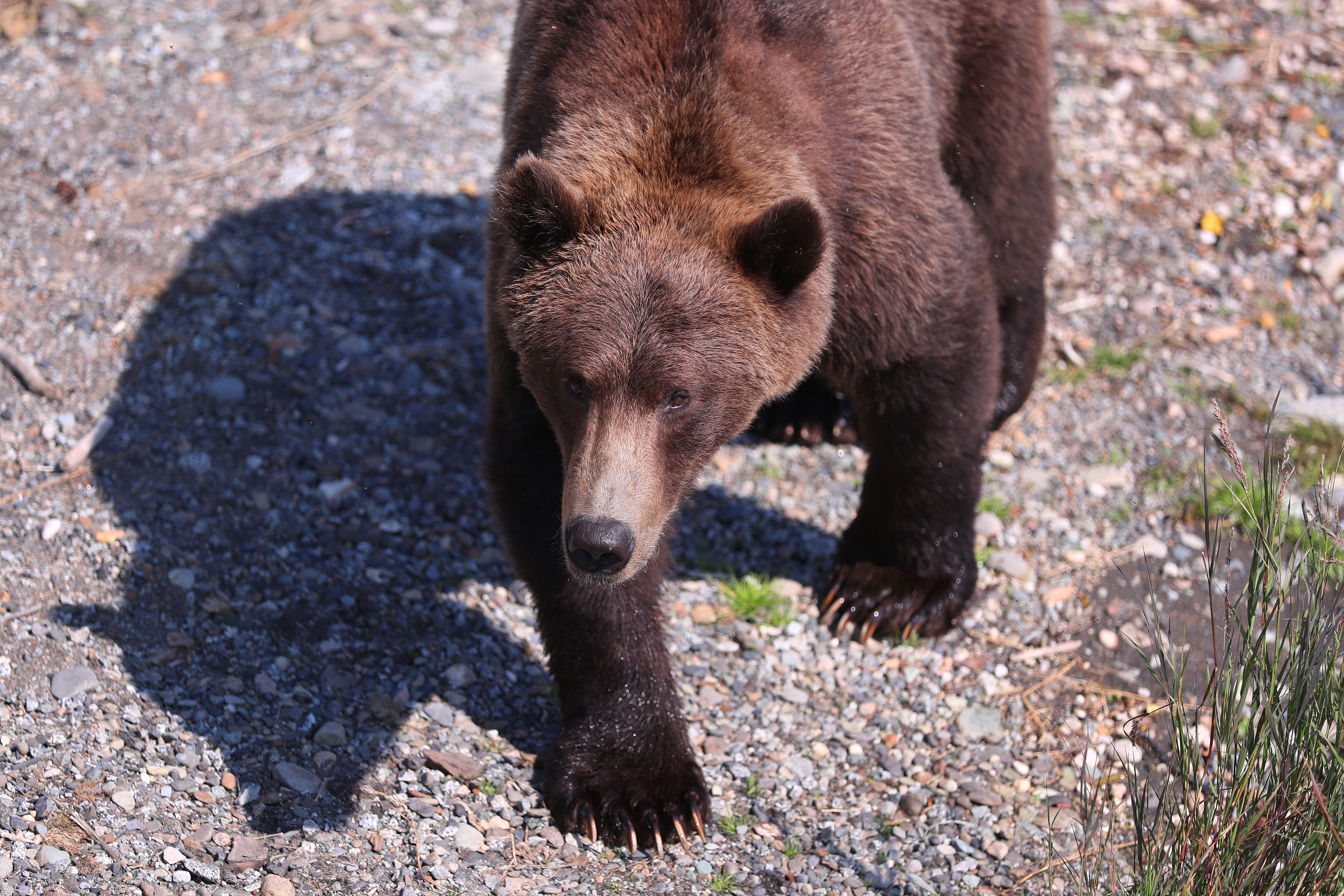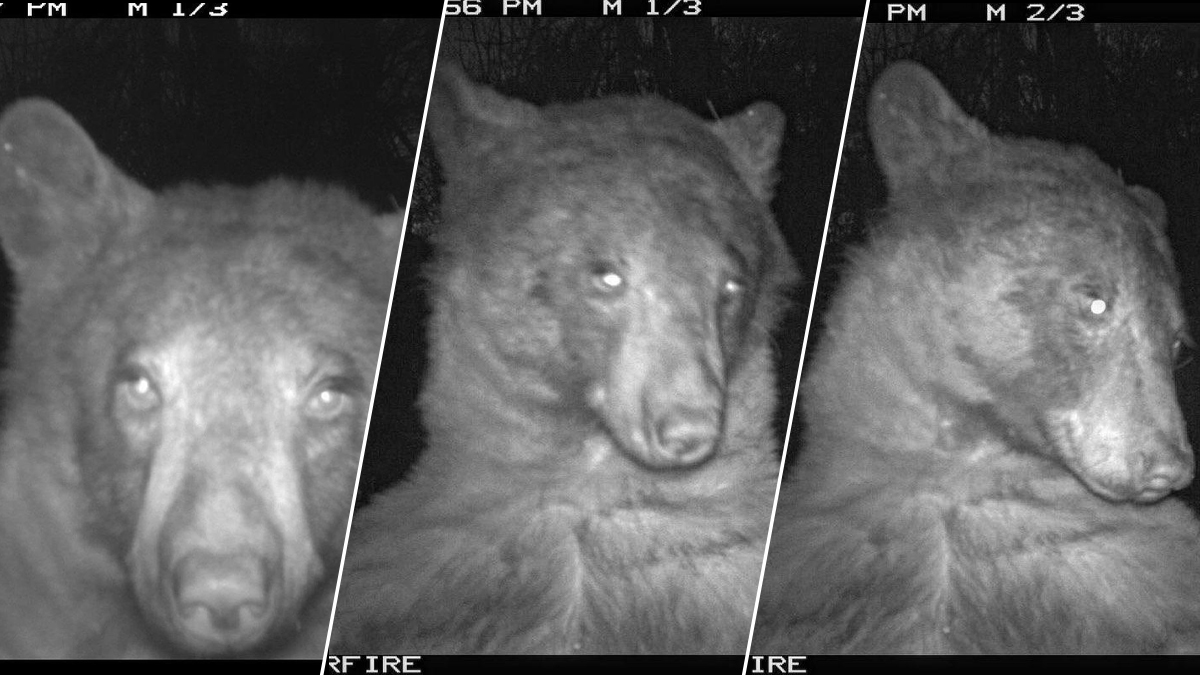A bear stopped for its close-up in the backyard of a home during a leisurely evening stroll in the snow that was caught on camera Thursday in the mountain community of Wrightwood.
The bear -- apparently in no hurry to get anywhere -- emerged from the darkness, leaving a trail of pawprints in the snow behind the home in the San Bernardino County mountains. The zaftig visitor appeared to briefly investigate a home security camera on a brick wall before jumping down onto a patio.
A small dog can be heard barking through a door flap as the bear moved out of sight. Another camera showed the healthy looking bear climb over a chain-link fence.
Get top local stories in Southern California delivered to you every morning. >Sign up for NBC LA's News Headlines newsletter.
The bear, who might have recently awakened from a long winter nap, was likely searching for food.
Black bears, which can have different color coats, are not true hibernators, but they're capable of dozing off for several months during winter, according to the California Department of Fish and Wildlife. The three characteristics of a true hibernator are reduced metabolism, slower heart rate, and lowered body temperature, according to the National Park Service.
During winter, black bears retain a body temperature of 88 degrees or higher, reduce their metabolic rate in half and live off their own fat, according to the Department of Fish and Wildlife.
Black bears like to feed on plants, insects, nuts, berries and whatever else they think of as edible -- such as the contents of trash bins. If food is scarce in their natural habitat, bears are likely to forage elsewhere, bringing them closer to humans and residential neighborhoods.
California's black bear population has been on the rise over the last two decades, growing from an estimated 10,000 to 15,000 in the early 1980s to between 25,000 and 30,000 -- and that's a conservative estimate, according to the state department of fish and wildlife.
Black bears, recognized by their small, narrow heads and small ears, have coats that range in color from tan or brown to black. Females grow up to about 200 pounds and males can be a hefty 350 pounds with some giants weighing in at more than 600 pounds
About half of the state's bear population can be found in the Sierra Nevada Mountains and areas to the north and west. Only an estimated 10 percent of the black bear population inhabits central western and southwestern California.
Although its on the state flag, the fearsome grizzly bear no longer can be found in the California wild. The last grizzly bear observed in California was shot in the early 1920s.



